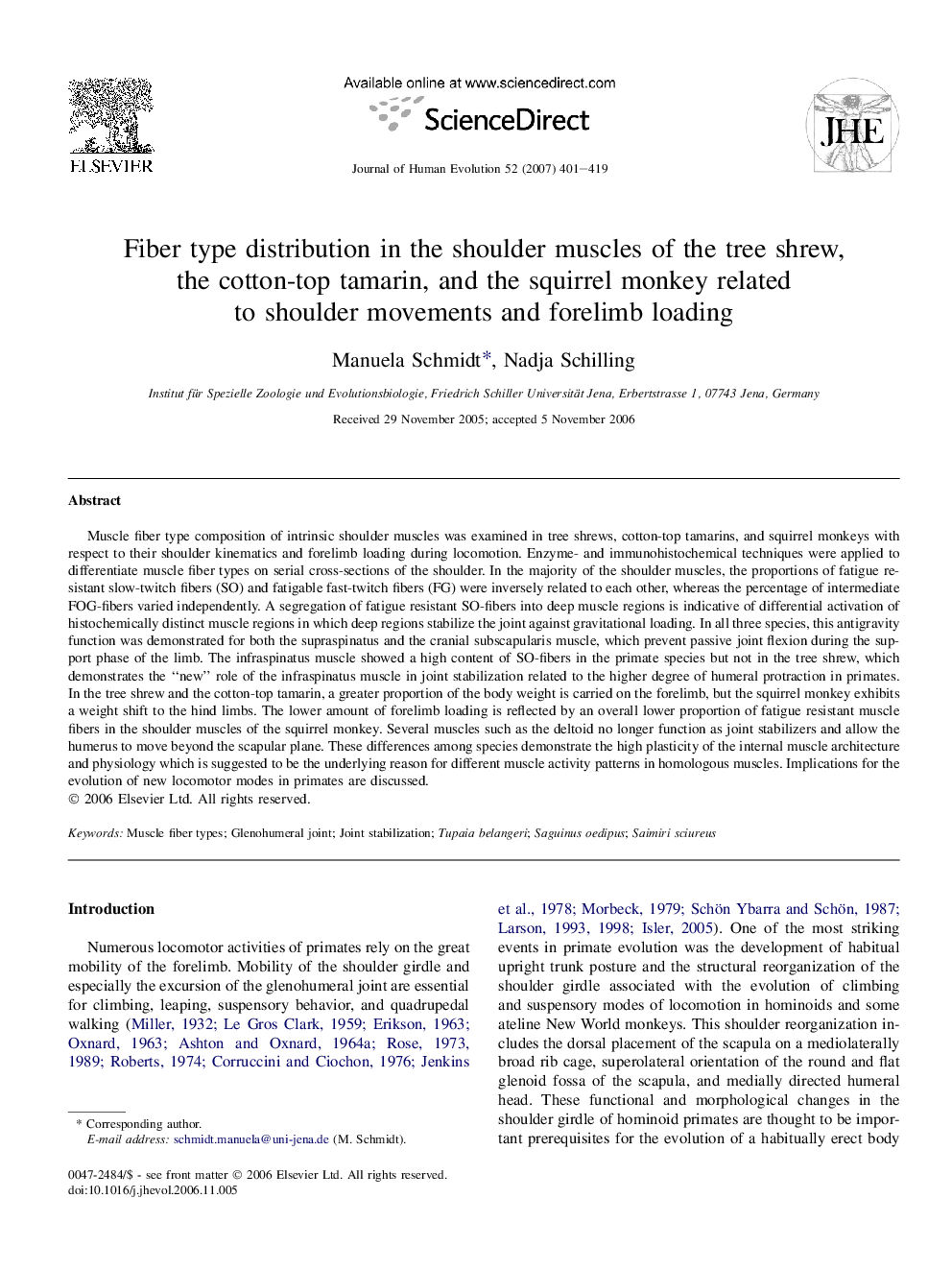| کد مقاله | کد نشریه | سال انتشار | مقاله انگلیسی | نسخه تمام متن |
|---|---|---|---|---|
| 4557413 | 1329558 | 2007 | 19 صفحه PDF | دانلود رایگان |

Muscle fiber type composition of intrinsic shoulder muscles was examined in tree shrews, cotton-top tamarins, and squirrel monkeys with respect to their shoulder kinematics and forelimb loading during locomotion. Enzyme- and immunohistochemical techniques were applied to differentiate muscle fiber types on serial cross-sections of the shoulder. In the majority of the shoulder muscles, the proportions of fatigue resistant slow-twitch fibers (SO) and fatigable fast-twitch fibers (FG) were inversely related to each other, whereas the percentage of intermediate FOG-fibers varied independently. A segregation of fatigue resistant SO-fibers into deep muscle regions is indicative of differential activation of histochemically distinct muscle regions in which deep regions stabilize the joint against gravitational loading. In all three species, this antigravity function was demonstrated for both the supraspinatus and the cranial subscapularis muscle, which prevent passive joint flexion during the support phase of the limb. The infraspinatus muscle showed a high content of SO-fibers in the primate species but not in the tree shrew, which demonstrates the “new” role of the infraspinatus muscle in joint stabilization related to the higher degree of humeral protraction in primates. In the tree shrew and the cotton-top tamarin, a greater proportion of the body weight is carried on the forelimb, but the squirrel monkey exhibits a weight shift to the hind limbs. The lower amount of forelimb loading is reflected by an overall lower proportion of fatigue resistant muscle fibers in the shoulder muscles of the squirrel monkey. Several muscles such as the deltoid no longer function as joint stabilizers and allow the humerus to move beyond the scapular plane. These differences among species demonstrate the high plasticity of the internal muscle architecture and physiology which is suggested to be the underlying reason for different muscle activity patterns in homologous muscles. Implications for the evolution of new locomotor modes in primates are discussed.
Journal: Journal of Human Evolution - Volume 52, Issue 4, April 2007, Pages 401–419